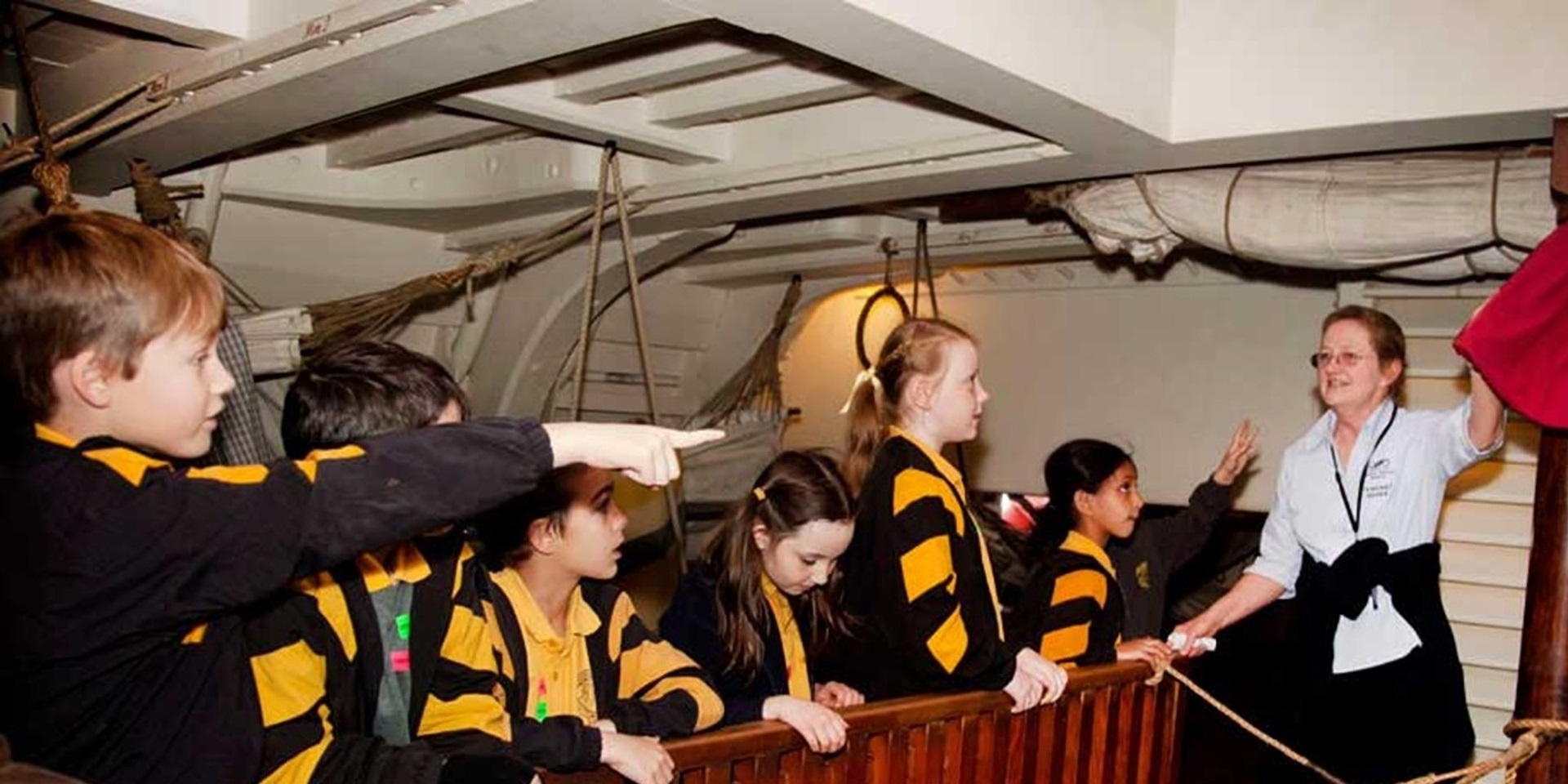Discussion Point – Anchors
This discussion point links to Years 4 and 7 ‘Science’. These curriculum links are listed at the bottom of the page.
HMB Endeavour has six anchors. They are located at various points around the vessel, and have different sizes and shapes. This makes them better suited for a variety of purposes.
How does an anchor work?
Generally an anchor is used to stop a ship moving. An anchor changes the forces that are acting upon the ship.
An anchor acts like a hook; it hooks the ship to the seafloor. The anchor is lowered onto the seafloor, falls over and is then dragged along the seafloor. As it is dragged, it digs into the seafloor and is partially buried; this process is called settling. Once an anchor is settled it is hard to move unless the ship is directly above it.
If an anchor lands badly or is on a surface that the anchor cannot dig into, the anchor will not settle properly and the crew may have to re-cast it. The forces that hold the anchor in place are gravity and friction.
The shape of the anchor determines how well it will dig into the seabed. To this day there is a lot of discussion about what is the best anchor shape. The type of seafloor you are sailing over can significantly affect the anchor shape needed.
The weight of the anchor determines how well the ship is secured and how difficult the anchor is to haul back to the vessel. The heavier the anchor the more secure the ship, but the more difficult it is to bring the anchor back on board. Sometimes it doesn’t matter if your ship drifts around slightly, so you can use a lighter anchor, making retrieval easier. In cases where you may hit rocks or another vessel if your ship drifts, then use a heavier anchor or possibly two anchors.
Can anchors be used for anything else?
Anchors can be used to change a ship’s direction. Throwing an anchor overboard can create a force that pulls the ship in a particular direction. This force can be used to turn or manoeuvre the ship.
Anchors can also be used to move a ship forward. This process is called kedging. An anchor is loaded onto a small boat (like a lifeboat) and rowed out away from the ship. The anchor is then dropped off the edge of the small boat and the ship starts to haul the anchor in. This causes the anchor to settle more securely by making it really dig into the seafloor. Once the anchor is dug in, continuing to haul the anchor will actually pull the ship towards the anchor! Kedging is still used today, but it was more common in the 18th century. Only relatively small amounts of movement can be achieved using kedging, but it was excellent for times when precise manoeuvrability was needed.
Endeavour’s anchors
HMB Endeavour had six anchors on board, for different purposes:
2 x bower anchors: These are the largest and heaviest anchors, used when secure anchorage was needed. They weigh about 2.5 tonnes each.
2 x stream anchors: The stream anchors are the second largest and weigh about 750 kilograms. They were used for short-stay anchorage when the ship drifting was less of a consideration. They were also often used in conjunction with the bower anchors to stop the ship swinging.
2 x kedging anchors: The kedging anchors were used to pull the ship forward. One kedging anchor was smaller than the other.
Activity
Friction
Friction is a force that resists movement. Friction occurs when two objects move across each other, or attempt to move across each other. When you overcome friction, and cause unbalanced forces, you achieve movement. Friction is one of the forces in play when anchors are used.
Activity – Burning Arms
Instructions
- Rub the back of your bare arms together for 30 seconds as fast as you can. Check in with students after 15 seconds; can they feel the heat?
- Ask students if their arms feel warm. Ask students if they can smell a slight burnt smell.
Explanation
As your arms move over each other, some of the kinetic energy (movement energy) is converted to heat energy. This heat energy can be felt in your arms. There is so much heat energy that it can sometimes cause the hair on your arms to burn slightly, which has a very distinctive smell.
Anchors
Year 4
Science
Science Understanding
- Forces can be exerted by one object on another through direct contact or from a distance (ACSSU076)
Year 7
Science
Science Understanding
- Change to an object’s motion is caused by unbalanced forces, including Earth’s gravitational attraction, acting on the object (ACSSU117)
